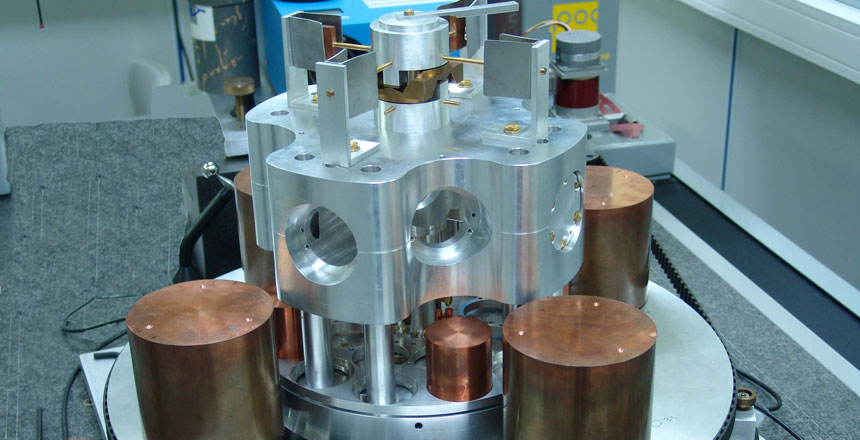
RAISING G Physicists measured a slightly larger value of the gravitational constant, or “Big G,” using a torsion balance (shown above).
Courtesy of T. Quinn
Nature’s slipperiest constant might be a smidge bigger than the currently accepted value.
Newton’s gravitational constant, the notoriously hard-to-measure “Big G,” is about 0.02 percent larger than the current standard, researchers report September 5 in Physical Review Letters.
If correct, the new value means that “Jupiter and the sun are probably a bit lighter than we think,” says study coauthor Harold Parks of Sandia National Laboratories in Albuquerque.
But a slightly bigger G shouldn’t change physicists’ work much, says Stephen Merkowitz, a NASA physicist who chased the cagey constant in 2000 with physicist Jens Gundlach. “It doesn’t really impact how we calculate orbits or trajectory of spacecraft,” he says.
Instead, scientists are drawn to measuring G for the challenge. “It’s the Mount Everest of precision measurements,” says physicist James Faller of the University of Colorado Boulder. “People want to climb it.”
Physicists first attempted the ascent in 1798, when British scientist Henry Cavendish measured G with a candle, a mirror and four lead weights in a contraption called a torsion balance. In the centuries following Cavendish’s study, physicists have built improved balances, but G’s value still jiggles up and down.
“Even with these modern measurements we still haven’t been able to come up with a strong agreement,” Merkowitz says. “That’s what’s so frustrating.”
Parks made this latest attempt on G with Terry Quinn, now emeritus director of the International Bureau of Weights and Measures in France, and two other colleagues. A 2001 effort by Quinn resulted in a G just a whisper higher than the one Gundlach and Merkowitz had calculated a year earlier — 200 parts per million more.
So Quinn and Parks launched a new campaign, tearing down Quinn’s old torsion balance, rebuilding it and measuring G again.
In the team’s experimental rig, a circular aluminum plate hangs suspended from its center by a metal ribbon. Four small copper cylinders stand along the plate’s perimeter, like candles in a chandelier. Just outside the plate, four bigger cylinders sit on a platform. When researchers move these hefty cylinders left or right, the little cylinders follow, forcing the plate to twist on its ribbon. The team can calculate the gravitational tug between the cylinders by measuring the ribbon’s twist, or by counteracting it with electricity.
“It’s simple conceptually but extremely difficult to do,” says Faller, who worked with Parks on an earlier G measurement. After the experiments, physicists typically spend years tracking down sources of error hiding among variables such as the balance’s temperature, the lab’s air currents and even the room’s tilt.
That error-hunting work “was the reason I didn’t sleep at night for years,” Faller says.
Because the new answer — 6.67545 x 10-11 meters cubed per kilogram per square second — matches Quinn’s from 2001, Parks thinks it just might have a chance of being right.







